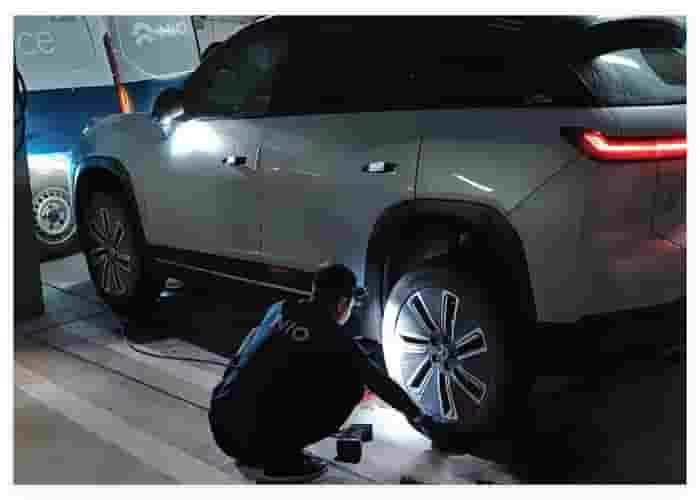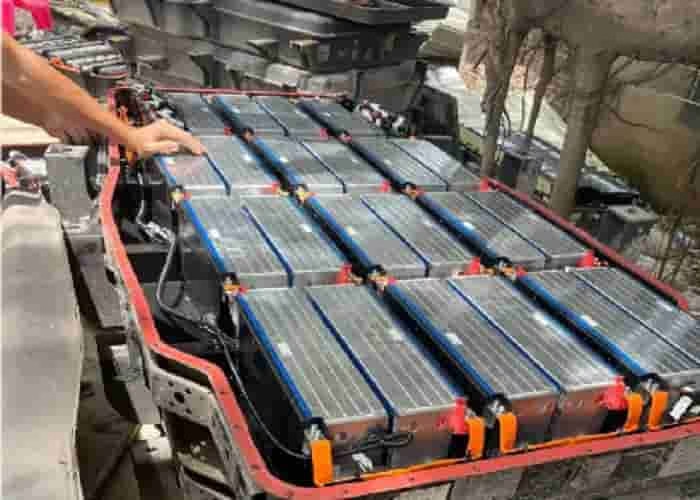The Chinese auto market in 2025 is standing at a historical crossroads. The game between new energy vehicles and fuel vehicles has never been so fierce: on one side, there is the rapid advancement of policy promotion, technological iteration and price war, and on the other side, there is the tenacious counterattack and cost-effective breakthrough of traditional fuel vehicles. Consumers standing in the exhibition hall, holding a budget, facing a dazzling array of choices, are inevitably in trouble: new energy vehicles are the future trend, but prices fluctuate greatly and battery anxiety lingers; fuel vehicles seem safe, but they are worried about being abandoned by the times. So, new energy vehicles VS fuel vehicles, how to buy a car? Today, let’s talk about the current situation of the Chinese auto market in 2025, analyze the advantages and disadvantages of new energy and fuel vehicles, and give you some practical car buying suggestions.
- New energy vehicle penetration rate: high-speed advancement or expectations are dashed?
In July 2024, China’s new energy vehicle market ushered in a milestone: the retail penetration rate exceeded 50% for the first time, which means that one out of every two cars sold is a new energy vehicle. At that time, the industry leaders were full of confidence. Weilai CEO Li Bin boasted that the penetration rate would soar to 75% in 2025, and BYD head Wang Chuanfu also optimistically predicted that it would exceed 60%, or even approach 65%. However, the latest data in April 2025 poured cold water on this craze: the production of new energy vehicles was 4.4 million, and the penetration rate was only 43%. Although the retail penetration rate was slightly higher, reaching 51.5%, it was far from Li Bin’s 75% target.
What is the reason behind this? First, the market growth rate slowed down. In 2024, the sales of new energy vehicles grew rapidly, but in early 2025, consumers’ wait-and-see attitude towards new energy vehicles intensified, partly due to the “buy early and lose a lot” mentality caused by price wars. Secondly, the counterattack of fuel vehicle manufacturers was extremely fierce, with price cuts and promotions, and the introduction of cost-effective models, which diverted the attractiveness of new energy vehicles. Despite this, the retail penetration rate of 51.5% has increased by 7 percentage points compared with the same period last year, indicating that the upward momentum of new energy vehicles is still there, but the pace is not as radical as expected.
The deeper reason may lie in consumers’ “trust deficit” in new energy vehicles. Battery life, charging facilities, battery attenuation and other issues still plague many potential buyers. Especially in winter, in the low temperature environment in northern regions, the endurance performance of new energy vehicles is often discounted, which makes many people discouraged. At the same time, the price advantage and mature technology of fuel vehicles allow it to still occupy a place in the market in 2025. - Subsidy decline and price war: “hand-to-hand combat” between new energy and fuel vehicles
In 2025, the subsidy policy for new energy vehicles will be further tightened. The subsidy for new energy vehicle purchases in Yunnan, Qinghai and other places will drop from 20,000 yuan in 2024 to 15,000 yuan, and some cities will even completely cancel the subsidy. This makes the price advantage of new energy vehicles no longer obvious. In contrast, the fuel vehicle market has set off a wave of “price cuts”. Taking joint venture brands as an example, the discounts for models such as Jaguar XEL and Volkswagen Passat exceed 100,000 yuan. Buick, Audi, Land Rover and other brands have even launched a “one-price” policy, and the price of entry-level luxury cars has been directly “cut in half”. For example, the starting price of the Land Rover Discovery Sport has dropped to less than 250,000 yuan, and its cost-effectiveness is close to that of domestic new energy vehicles.
New energy vehicle companies are also not idle. BYD Qin PLUS has dropped from 140,000 yuan three years ago to 79,800 yuan today. The technology has also been upgraded and equipped with the latest DM-i hybrid system, with fuel consumption as low as 3 liters per 100 kilometers. Xiaopeng, Weilai and other brands have also frequently launched limited-time discounts, and the terminal prices of models such as G6 and ES6 have dropped by 30,000 to 50,000 yuan. Although this price war has benefited consumers, it has also brought the sequelae of “buying early and losing a lot”. Many car owners who bought cars in 2023 found that the price of their beloved cars is now almost halved, and the value retention rate is terrible.
In contrast, the value retention rate of fuel vehicles is relatively stable. Taking the Volkswagen Passat as an example, the three-year value retention rate can still be maintained at more than 60%, while the value retention rate of new energy vehicles is generally between 40%-50%, and some models are even lower. This makes many consumers with limited budgets and long-term use more inclined to choose fuel vehicles. - Future trends: New energy penetration rate is expected to exceed 50%, but the time has not come
Although the penetration rate of new energy vehicles in 2025 did not meet expectations, the long-term trend is still clear. As joint venture brands accelerate their electrification transformation, the launch of models such as Nissan N7 and Toyota Platinum 3X has made the choice of new energy vehicles more diversified. The prices of these joint venture new energy vehicles are close to those of domestic models of the same level, but the quality and brand premium are more attractive. For example, the range of Nissan N7 reaches 600 kilometers, and the interior workmanship and intelligent configuration are close to domestic high-end brands, but the starting price is only over 200,000 yuan. This new model of “both inside and outside” is pushing the penetration rate of new energy vehicles to more than 50%.
In addition, technological progress is also adding points to new energy vehicles. In 2025, L2+ assisted driving systems have become standard for many new energy vehicles, and L3 autonomous driving technology has also begun to be used on a small scale in high-end models. Although the research and development of solid-state batteries has not yet fully matured, BYD, CATL and other companies have announced that they will achieve mass production by 2027, when the safety, endurance and charging speed of the battery will be greatly improved. These technological breakthroughs have undoubtedly added imagination to the future of new energy vehicles.
However, the shortcomings of new energy vehicles still exist. Although the coverage of charging piles is increasing, the charging facilities in third- and fourth-tier cities and rural areas are still insufficient, and long-distance travel still requires “boldness and carefulness”. In addition, the problem of battery degradation has not been completely solved, especially in the used car market, the residual value assessment of new energy vehicles is still a major problem. In contrast, fuel vehicles have a simple mechanical structure, low maintenance costs, and a complete network of gas stations, which are suitable for long-distance driving and users who rely more on infrastructure. - Car purchase advice: fuel vehicles are more stable, and new energy vehicles need to wait
Facing the car market in 2025, should we choose new energy vehicles or fuel vehicles? The answer depends on your car needs and psychological expectations. Here are some practical car buying suggestions:
(1)Limited budget, pursuit of cost-effectiveness, fuel vehicles are better**
The current price advantage of fuel vehicles is obvious, especially the mid-to-high-end models of joint venture brands, which are extremely cost-effective after price cuts. If your budget is 150,000-250,000 yuan, it is recommended to pay attention to Volkswagen Passat, Toyota Camry or Buick LaCrosse. These models are not only spacious and powerful, but also have a high value retention rate, suitable for family cars or business scenarios.
For example, the Volkswagen Passat 2025 2.0T model, with a landing price of about 180,000 yuan after the discount, is equipped with L2-level assisted driving, and the fuel consumption is only 6.5L/100km. The overall performance is not inferior to new energy vehicles of the same price.
(2)Focus on intelligence and low vehicle cost, new energy vehicles can be considered**
If you live in first- and second-tier cities with complete charging facilities and your daily commuting distance is short (within 50 kilometers), new energy vehicles are a good choice. BYD Qin PLUS DM-i, Xiaopeng G6 and other models have low comprehensive vehicle costs (electricity + fuel costs are about 0.3 yuan/kilometer) and rich intelligent configurations, which are suitable for young people or technology enthusiasts.
However, it should be noted that new energy vehicles are updated quickly. It is recommended to choose the latest models to avoid buying “stock cars” and then the price drops.
(3)Fuel vehicles are safer for long-distance driving or areas with weak infrastructure**
If you often drive on highways or live in third- and fourth-tier cities, fuel vehicles are still a more reliable choice. The convenience of gas stations and the stability of fuel vehicles can save you from the troubles of “range anxiety” and “charging queues”. Honda CR-V or Toyota RAV4 Rongfang is recommended. The hybrid version takes into account fuel consumption and power, which is suitable for use in multiple scenarios.
(4)Wait and see new technologies and wait for a more mature time**
If you are not in a hurry to buy a car, you might as well wait another 1-2 years. With the gradual popularization of L3 autonomous driving and solid-state batteries, the experience of new energy vehicles will be greatly improved, and prices are expected to stabilize further. By then, the comprehensive competitiveness of new energy vehicles will far exceed that of fuel vehicles and become the mainstream of the market. - Choose the best one that suits you
In the Chinese auto market in 2025, the competition between new energy vehicles and fuel vehicles will continue. New energy vehicles represent the future. Policy support and technological progress make it unstoppable, but price fluctuations and infrastructure shortcomings have prevented it from completely “dominating”. Fuel vehicles, with their mature technology and price advantages, are still the “safe choice” for many consumers. Whether you are a “electric car fan” who pursues fashion or a “fuel car party” who prefers classics, choosing a car that suits your needs and budget is the kingly way.
If you have a limited budget and are sensitive to the value retention rate, fuel vehicles may be a better solution at this stage; if you pursue low car cost and intelligent experience, you might as well boldly embrace new energy vehicles. But in any case, the auto market in 2025 is full of variables. Test drive and compare more before buying a car to find the “dream car” that truly belongs to you!
















Leave a Reply